
Interior design refers to the internal space of rooms: styles of decoration, classification, and characteristics
Interior (from Latin "interior") is the internal space of a building or a separate room with elements of the surrounding environment. Interior design also refers to the artistic and architectural decoration of rooms or halls, created for comfortable human living.
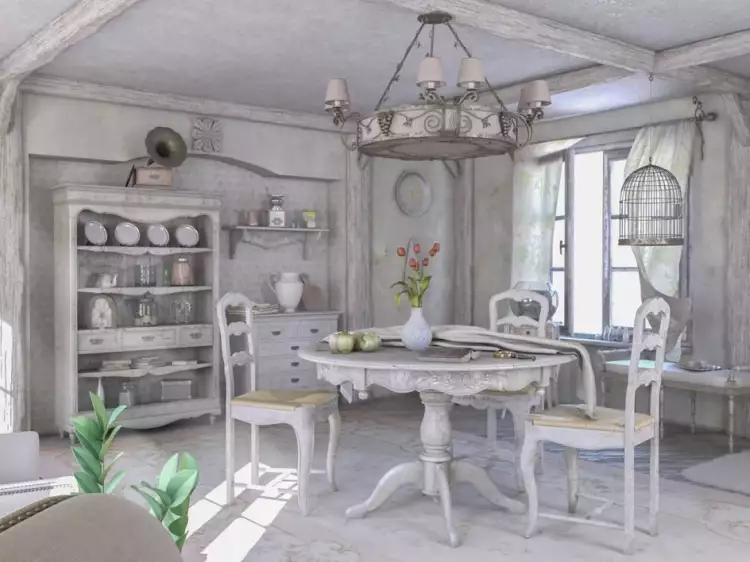 Interior. French Provence interior
Interior. French Provence interior
The interior consists of two main parts: the structural elements (floor, walls, and ceiling) and the furnishings (furniture and decor). The choice of materials for finishing directly depends on the size and type of the room, as well as the personal preferences of the apartment (private house, commercial building) owner.
Classification of Interiors
Interiors can be divided into three major groups based on decorating styles:
- Classical (Antique, Gothic, Renaissance, Neoclassicism, Baroque, Rococo, Biedermeier, Empire, Art Deco, Modern).
- Ethnic (African, Arabian, Japanese, Chinese, Indian, Russian, Scandinavian, French, English, American).
- Modern (Hi-tech, Fusion, Country, Grunge, Minimalism, Eclecticism, Functionalism, Pop Art, Loft, Techno, Shabby Chic, Kitsch, Boho).
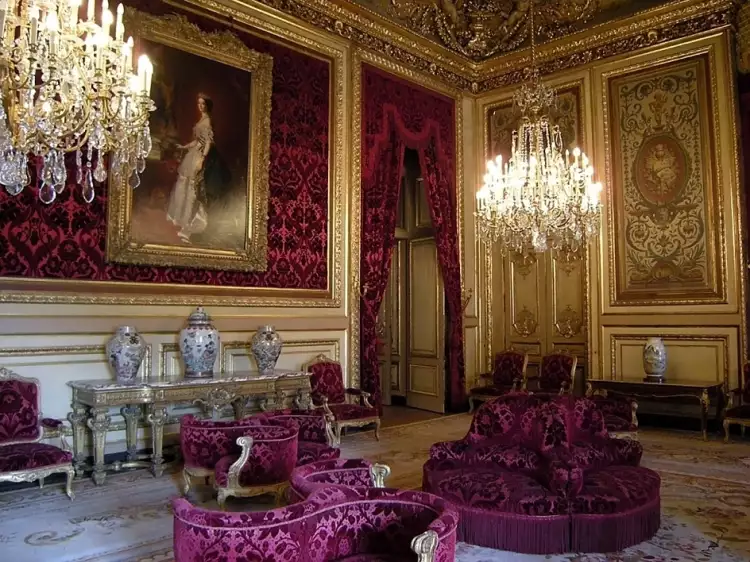 Interior. Empire style interior
Interior. Empire style interior
Classical interior types gradually formed throughout the existence of human civilization. Many of them have names similar to painting, sculpture, and architectural styles.
Ethnic styles vividly reflect the cultural traditions of a particular nation. Artistic decoration of rooms uses characteristic folk motifs.
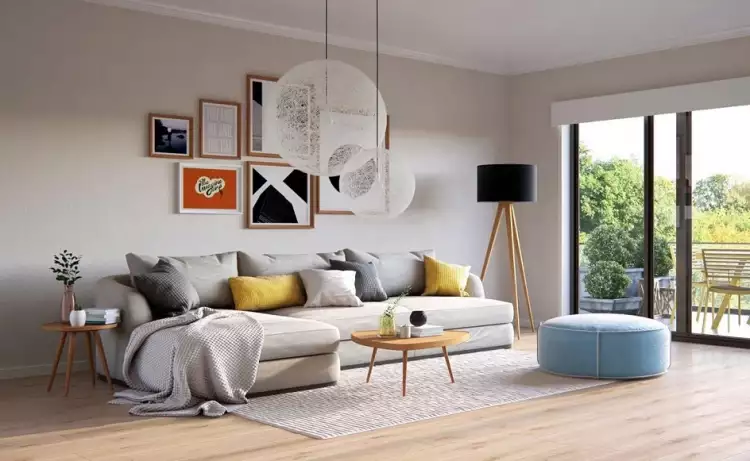 Interior. Scandinavian style interior
Interior. Scandinavian style interior
The number of modern interior styles is steadily growing every year. Designers constantly offer innovative solutions for arranging the internal space of rooms. The most successful options quickly gain popularity and eventually become new fully-fledged decorating styles.
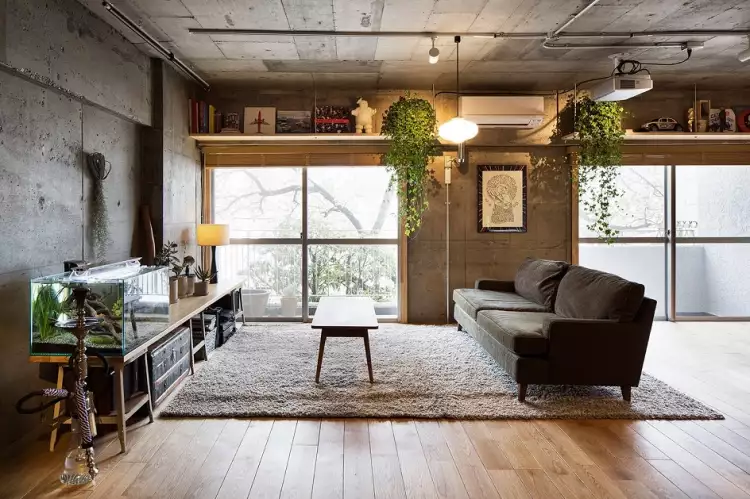 Interior. Grunge style interior
Interior. Grunge style interior
Main Interior Styles
Among the vast number of interior styles, there are several options that remain popular to this day. Let's take a closer look at them.
Antique
The antique style emerged over 2000 years ago in Ancient Greece. It is characterized by the following features:
- Exquisite moldings.
- Imitation of ancient columns.
- Dome-shaped ceilings.
- Smooth polished floors.
- Presence of bas-reliefs and niches in the walls.
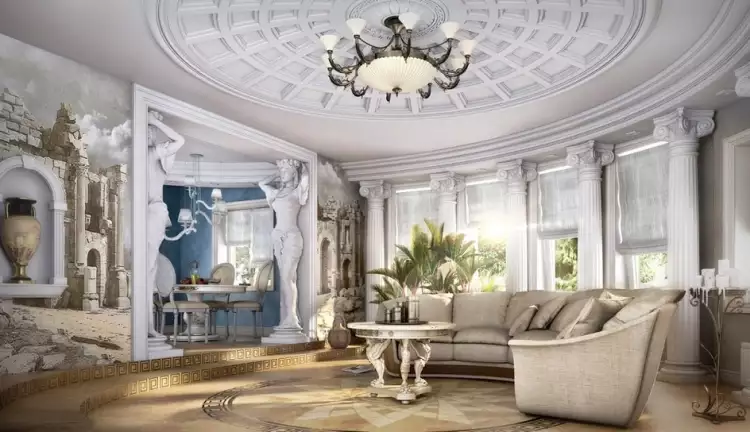 Interior. Antique style interior
Interior. Antique style interior
Antique style represents a majestic way of decorating the home with mosaics, paintings, statuettes, and busts of mythological heroes and thinkers of antiquity.
Gothic
The Gothic style appeared as early as the 13th century in France. It is filled with the atmosphere of an ancient castle and expressiveness, looking solid and striking.
Distinctive features:
- Tall doors and ceilings.
- Massive doors and furniture.
- Colorful stained glass and figurative ornaments.
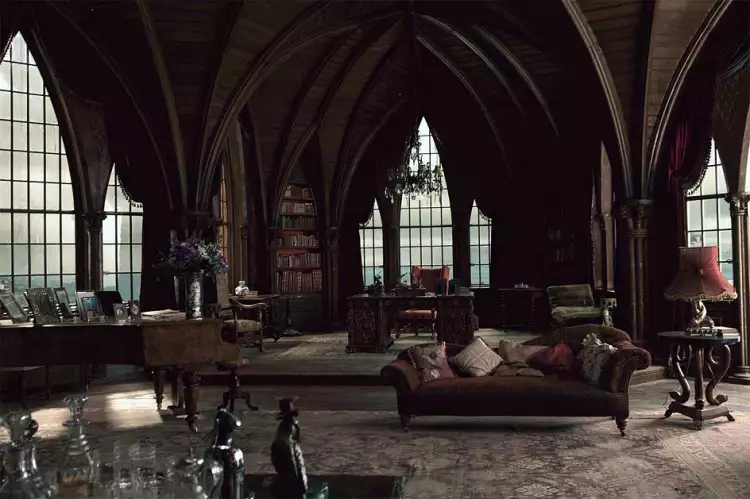 Interior. Gothic style interior
Interior. Gothic style interior
Expensive carpets, paintings, and engravings.
Gothic is the style of ancient Catholic cathedrals, exuding the grandeur of the Church and God. It is suitable for luxuriously furnished large halls and rooms in elite country mansions and luxury apartments.
Renaissance
This style combines antique and monumental features. The interior design includes the following elements:
- Soft color palette.
- Graceful paintings and arabesques.
- Rounded arches.
- Columns and pilasters.
- Ornamentation with carved wood.
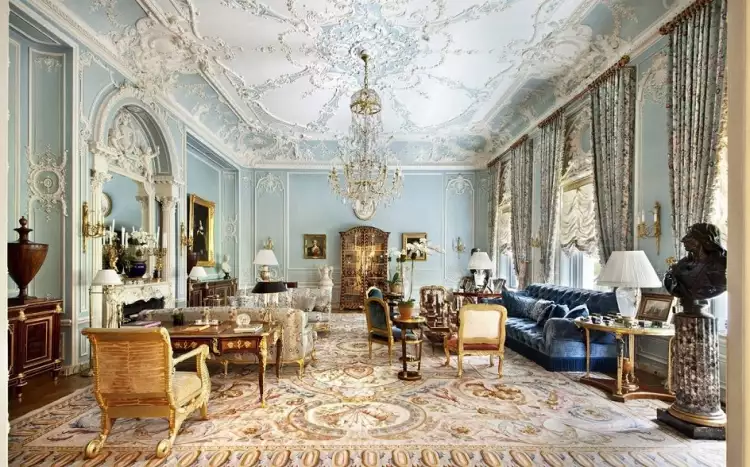 Interior. Renaissance style interior
Interior. Renaissance style interior
Renaissance furniture is adorned with skillful carvings and inlays. Rare types of wood, ivory, and natural stone are often used in wall finishes.
Classicism
Classicism dominated in interior design and art for two centuries, from the 17th to the early 19th century. It is characterized by precision, symmetrical arrangement, absence of excessive luxury, and a desire for order.
Distinctive features:
- Restrained decor.
- Expensive finishing materials.
- Neutral monochromatic colors.
- Brown furniture and parquet flooring.
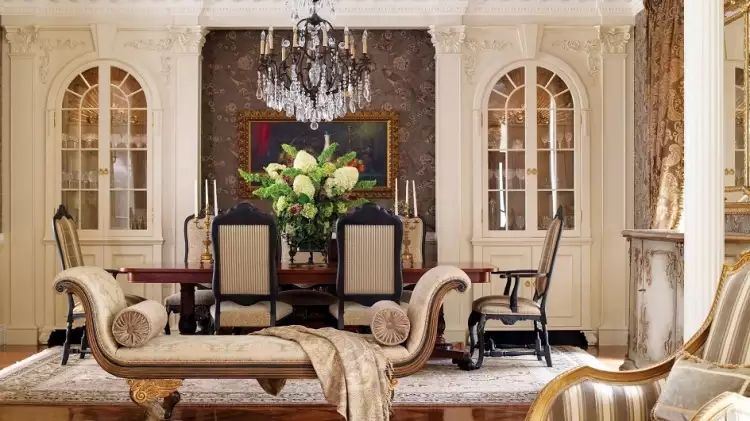 Interior. Classical style interior
Interior. Classical style interior
Classicism remains popular in aristocratic circles to this day. It successfully combines balance between form and content, functionality, and nobility of the interior.
African
The African style is impossible to imagine without bright colors and expressiveness. Walls the color of burnt earth and dry grass harmoniously combine with ornate heavy furniture. Additionally, this style often features:
- Figurines and skins of exotic animals.
- Golden and crimson accents.
- Carved masks and colorful wallpapers.
- Wall-mounted lamps and hanging shelves.
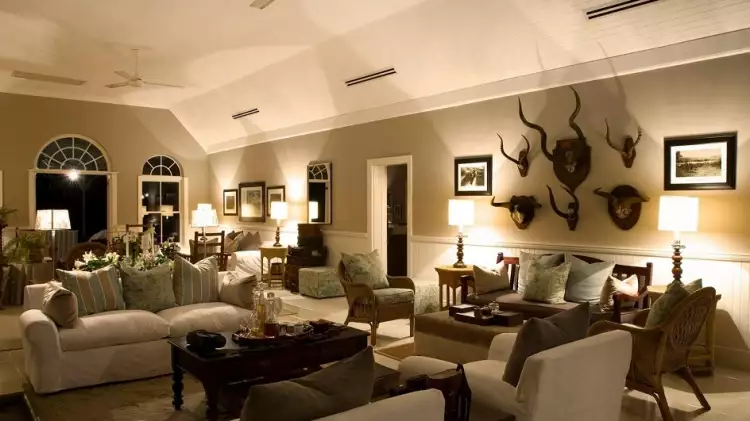 Interior. African style interior
Interior. African style interior
The African style is usually chosen by active people for whom life is a cheerful celebration with exciting adventures.
Arabic
The Arabic style is easily recognizable by elaborate ornaments on the walls and rich lighting. It is often chosen by people who appreciate luxury and a tranquil atmosphere.
Characteristics:
- Canopied beds.
- Low sofas and chairs.
- Carpets and stylish cold weapons on the walls.
- Massive curtains and chandeliers.
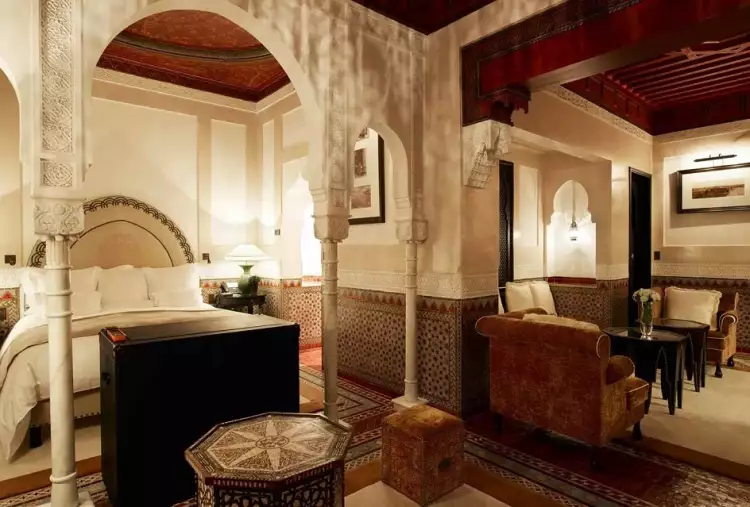 Interior. Arabian style interior
Interior. Arabian style interior
Rooms decorated in the Arabic style look very exotic. Both hosts and guests always feel cozy in them.
Japanese
The Japanese style can be described in two words - delicate simplicity. There is no place for expensive decorations and ostentatious luxury. On the contrary, this setting is characterized by minimal decor and furniture, as well as:
- Soft diffused lighting.
- Mysterious hieroglyphic signs.
- Exquisite engravings on the walls.
- Decor made of bamboo and rattan.
- Movable screens instead of partitions.
- Tatami mats on the floor.
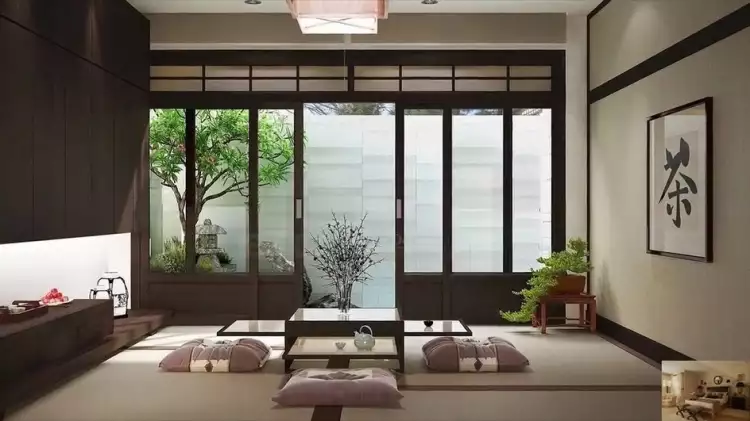 Interior. Japanese style interior
Interior. Japanese style interior
The Japanese style encourages serene contemplation of nature and meditation away from the hustle and bustle of the big city.
Russian
The Russian style incorporates elements from various cultures and eras. It is in demand not only in Russia but also in the West, especially among the descendants of emigrants.
Key features:
- Abundance of natural wood.
- A large number of ornaments and national decor.
- Massive wooden furniture.
- Embroidery and lacework.
- Ceramics and textiles.
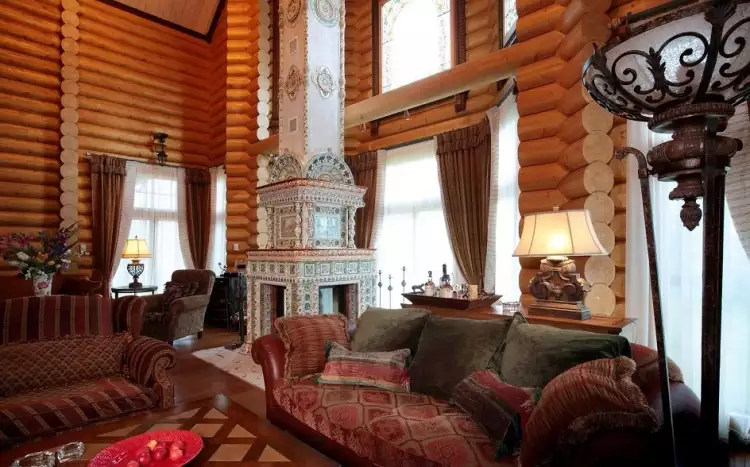 Interior. Russian style interior
Interior. Russian style interior
The highlight of the Russian style is the decorative painted stove, which adorns the richly decorated room.
High-tech
High-tech is an ultra-modern style characterized by an abundance of open space and a multitude of cutting-edge technology. Furniture is made of glass, metal, and plastic, and abstract paintings hang on the walls. Additionally, this style can be recognized by:
- Built-in wardrobes and transformer sofas.
- Sleek and thin light fixtures and book-shaped tables.
- Absence of textiles in the room.
- Roller blinds or blinds on windows.
High-tech is the practical choice of successful businessmen with big ambitions and plans for the future.
Country
This rustic style is perfect for people who often reminisce about carefree childhoods. Country is a homey atmosphere that calms and heals emotional wounds.
Distinctive features:
- Calm colors and abundance of decor.
- A large amount of textiles (tablecloths, napkins, rugs).
- Potted flowers on windowsills.
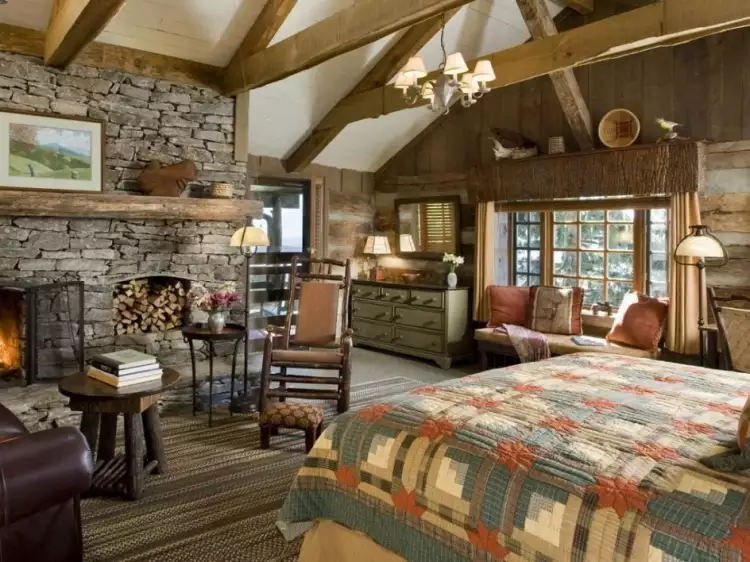 Interior. Country style interior
Interior. Country style interior
In a country-style setting, it is very cozy to be with family in bad weather, indulge in contemplation, and sweetly doze by the fireplace.
Loft
This style is perfect for artistic decoration of spacious rooms measuring several hundred square meters. Loft is fashionable and stylish, it is especially popular among residents of large metropolises.
Distinctive features:
- Absence of partitions.
- Space zoning.
- High ceilings.
- Brickwork finish.
- Decor in the form of pipes, shafts, and cables.
Loft is the ideal space for creative individuals who value freedom and are always open to new friends.
Eclecticism
Eclecticism is a unique interior style that combines objects from different eras. In it, a modern sofa can coexist with an antique carved buffet, and a Japanese figurine can sit on a shelf next to an African mask.
Distinctive characteristics:
- Heavy curtains and silk wallpaper.
- Soft furniture with decorative pillows.
- Glass chandeliers and parquet floors.
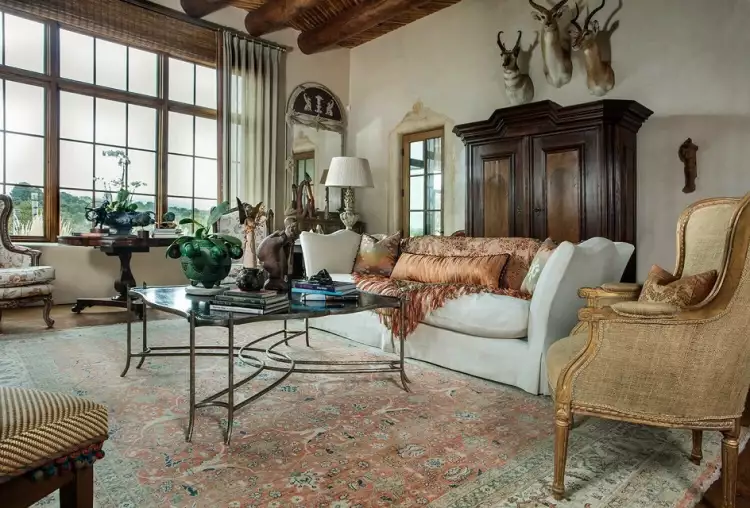 Interior. Eclectic style interior
Interior. Eclectic style interior
Eclecticism is a rather whimsical style, and not every designer can master it skillfully. To achieve harmony in combining elements of different eras in the interior, one needs special talent and impeccable taste.
On the Very Important Lot portal, any visitor can participate in art auctions and purchase antique items, including furniture and decor. The website also offers everyone a unique opportunity to directly buy paintings for interior decoration from talented contemporary artists.
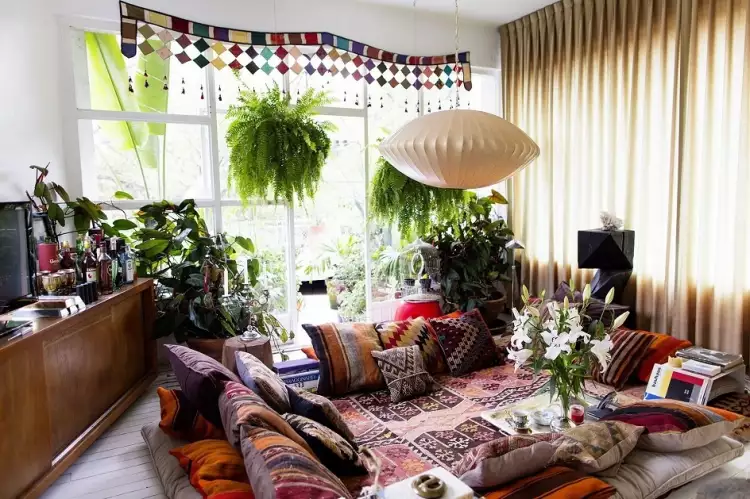
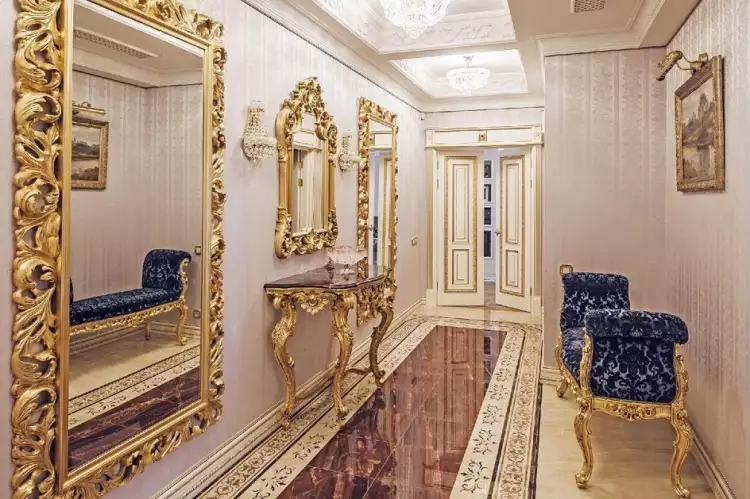
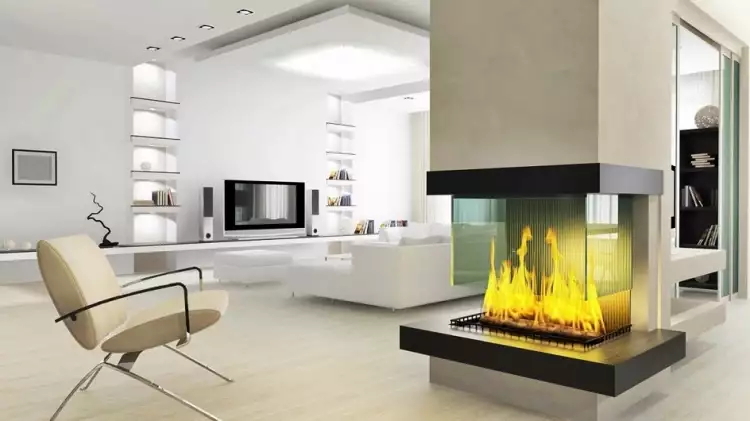
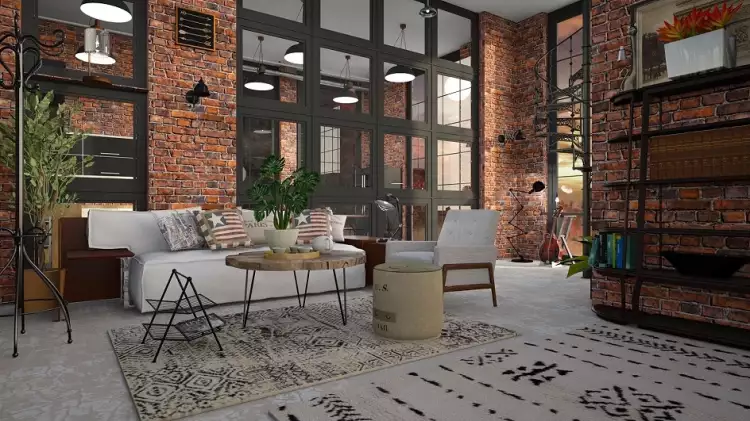
 Bartolomeo Francesco Rastrelli was a brilliant Italian architect who became the greatest master of Russian architectural art of all times
Bartolomeo Francesco Rastrelli was a brilliant Italian architect who became the greatest master of Russian architectural art of all times 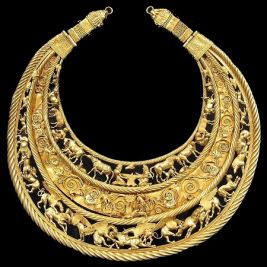 Jewelry craftsmanship - an ancient art of creating unique masterpieces from precious materials
Jewelry craftsmanship - an ancient art of creating unique masterpieces from precious materials 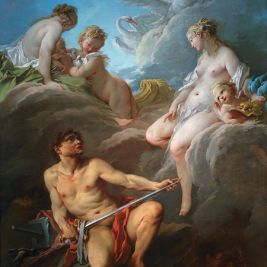 François Boucher - the frivolous artist of the French king: biography and best paintings
François Boucher - the frivolous artist of the French king: biography and best paintings 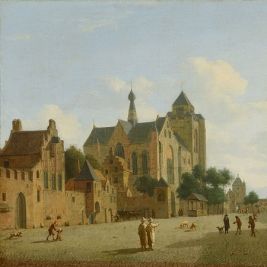 Figurative art and figurativism are antipodes of abstractionism and conceptualism
Figurative art and figurativism are antipodes of abstractionism and conceptualism  The painting "Portrait of T. H. Shevchenko" by Ivan Kramskoy is a belief in humanity that has transcended centuries
The painting "Portrait of T. H. Shevchenko" by Ivan Kramskoy is a belief in humanity that has transcended centuries  Sculpture is the unique art of creating three-dimensional artistic works
Sculpture is the unique art of creating three-dimensional artistic works 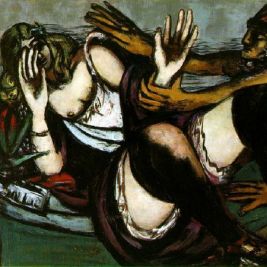 Expressionism - a shocking emotional movement in 20th-century art
Expressionism - a shocking emotional movement in 20th-century art 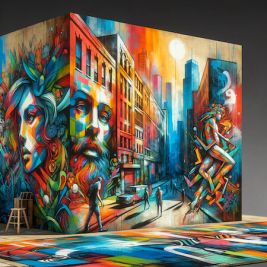 Street Art and Neo-Expressionism: Vital Art Trends of 2023
Street Art and Neo-Expressionism: Vital Art Trends of 2023 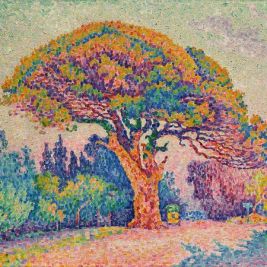 Post-Impressionism is a joyful and unconventional style in painting
Post-Impressionism is a joyful and unconventional style in painting 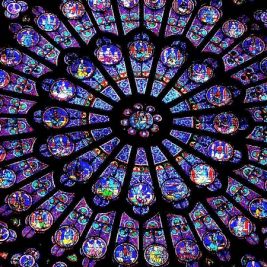 Stained glass is a grand masterpiece of monumental art made from small pieces of colored glass
Stained glass is a grand masterpiece of monumental art made from small pieces of colored glass